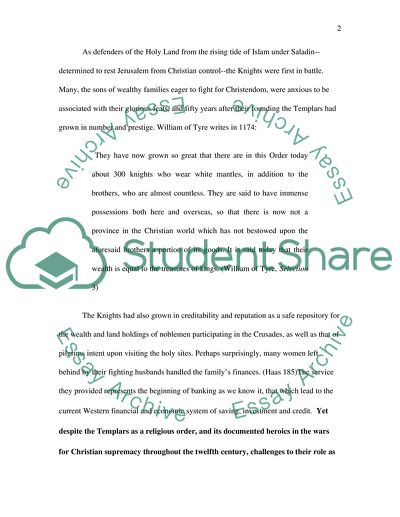Cite this document
(“The History of the Knights Templar and The Temple Church Research Paper”, n.d.)
The History of the Knights Templar and The Temple Church Research Paper. Retrieved from https://studentshare.org/history/1734367-medieval-europe-research-paper
The History of the Knights Templar and The Temple Church Research Paper. Retrieved from https://studentshare.org/history/1734367-medieval-europe-research-paper
(The History of the Knights Templar and The Temple Church Research Paper)
The History of the Knights Templar and The Temple Church Research Paper. https://studentshare.org/history/1734367-medieval-europe-research-paper.
The History of the Knights Templar and The Temple Church Research Paper. https://studentshare.org/history/1734367-medieval-europe-research-paper.
“The History of the Knights Templar and The Temple Church Research Paper”, n.d. https://studentshare.org/history/1734367-medieval-europe-research-paper.


